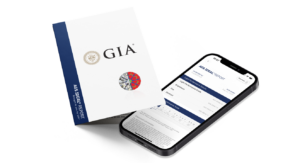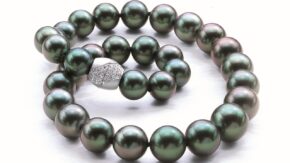Martin Rapaport’s 2023 New Year message caused a storm of controversy. He argued that the rise in synthetic-diamond sales was being driven by a greed that would destroy the natural diamond industry once consumers realized lab-grown had no lasting value. Rapaport received a slew of emails as the industry weighed in on the debate. Here are just a few of those comments.
I was initially anti-lab-grown and have since seen the viability of this market. We are selling lab-grown 4:1, and there are several reasons why: The price is making what was previously only available to the super-rich within reach; Gen X-, Y- and Z-ers prefer that the diamond not come from the earth, [in the interest of] protecting and leaving our natural resources undisturbed; and the availability of lab-grown diamonds provides consumers with many more and faster options.
I’m not saying lab-growns are for everyone, but they certainly present an opportunity for both buyer and seller. Our margins on lab-grown diamonds are tremendously higher than naturals, and many other dealers are seeing the same thing.
I always educate and explain the differences to customers and try to emphasize the value of a rare earth-mined gem. Usually it’s a financial decision, plain and simple.
I hope both can find their place in the market. Naturals became so ridiculously expensive toward the end of the pandemic, and [that] carried over until mid-2022. I believe this opened the door for synthetics. My customers don’t seem to care that their diamonds will be worthless at some point. Gen X, Y and Z largely do not care about the rarity or mystique of natural diamonds. [This is] the world we live in, and…humans need to adapt to the curveballs.
David Alpert
New England Diamond Jewelry BuyersI have resisted lab-grown diamonds for years, but I’ve reached a point where I will now sell but not stock them. Customers want to buy them from me, so I feel a sense of responsibility to sell it to them for a fair price with complete disclosure, rather than have them buy it from the stores that are pushing them with insane markups. My explanation to them is simple: Keep your spend below $5,000, and think of it like an expensive bag that you wear to death that won’t have any resale value, but at least you enjoyed it.
Chris Sarraf
Nuha JewelersIn my opinion, the biggest harm to the jewelry industry in the last two decades has been the passing off of lab-grown diamonds as being acceptable as long as they are mounted in gold jewelry.
John S. Gupton
Private Label ImportsI feel, at present, that the production of lab-grown diamonds is far higher than the demand from the end consumer, even considering [that the] growth in demand and production is only going to keep increasing. However, I do see why consumers, especially millennials, may choose lab-grown diamonds for small, casual jewelry purchases. People spend about $1,000 to $1,500 on a mobile phone, and it has almost no resale value, just the utility/usage value.
Yet in India, most customers at present are averse to buying lab-grown diamonds. In fact, after the awareness about lab-grown diamonds, we get clients asking us specifically for natural diamonds and making sure we are not giving them lab-grown, because people in India see jewelry-buying as an investment, as something having a store of value, and a safe asset in uncertain times.
It may open up a whole new segment of consumers in India who couldn’t afford natural diamond jewelry, but I believe that may adversely affect the natural-diamond market, as the exclusiveness factor will be diminished unless we as an industry are able to market both as separate categories and insist on buying natural diamond jewelry for special occasions….
Natural diamonds are rare, hence expensive and exclusive.
Ishaan Shah
Sarvada JewelsAt first, we received very few synthetic requests. In 2022, [these] increased substantially. My children are now of the age where their friends come to me for engagement rings.
One such man in his 20s, my son’s roommate, was initially sold on the idea of buying a synthetic because it was larger and less money. He didn’t care about any effect on the environment or anything else. G-d willing, he was never going to sell it, so he didn’t care about future value until I pointed out how the family heirloom, passed down to a future son or daughter, would be worthless. That got him.
Using De Beers’ Lightbox pricing as a guide, we think we’ll start seeing a huge disparity [between] what someone buys a synthetic for [and] what it appraises for. This at a time when synthetic retailers cling to over-inflated profit margins as rapidly “rotting” inventory value dries up in their cases. It should be an interesting ride as this all plays out.


